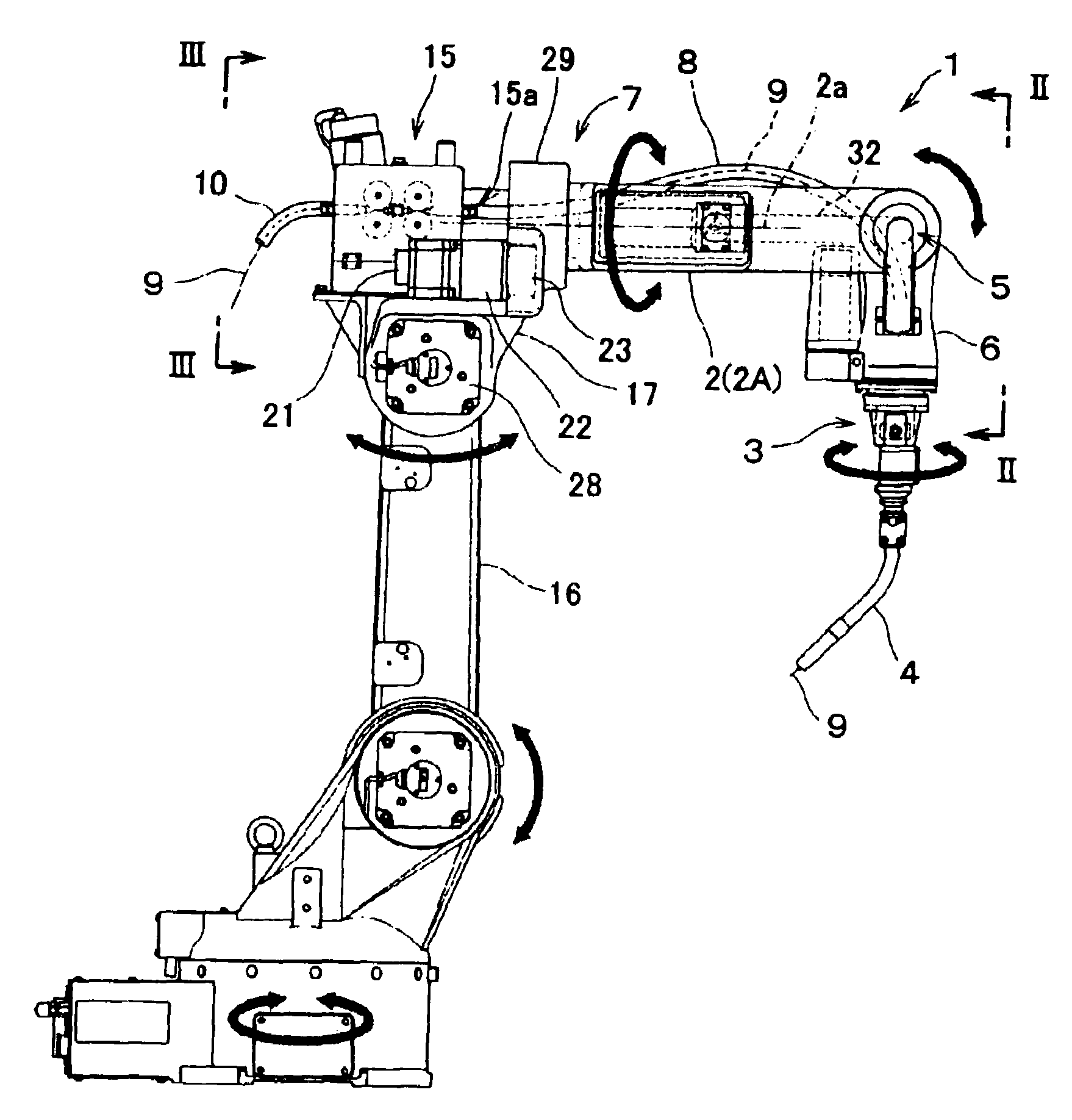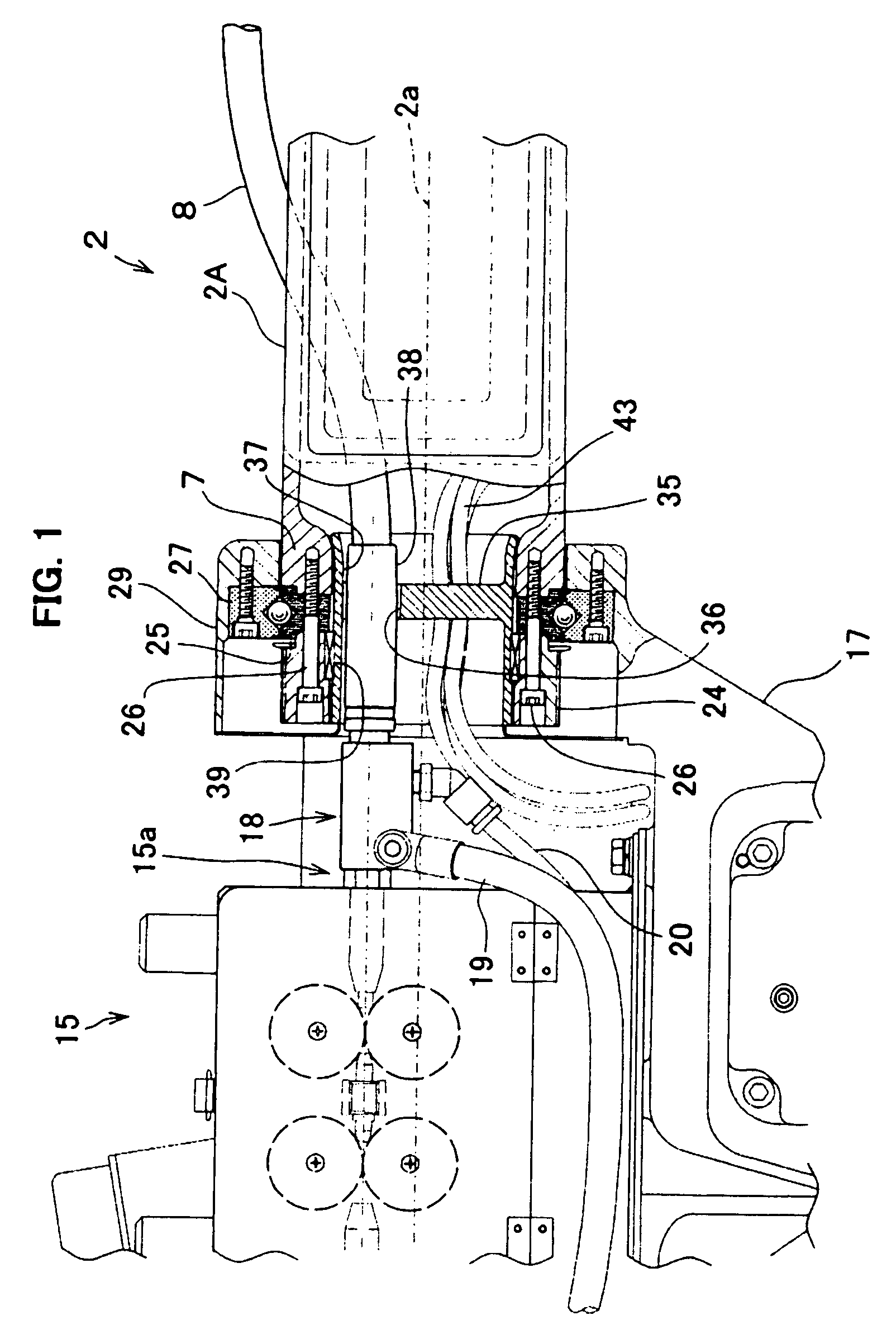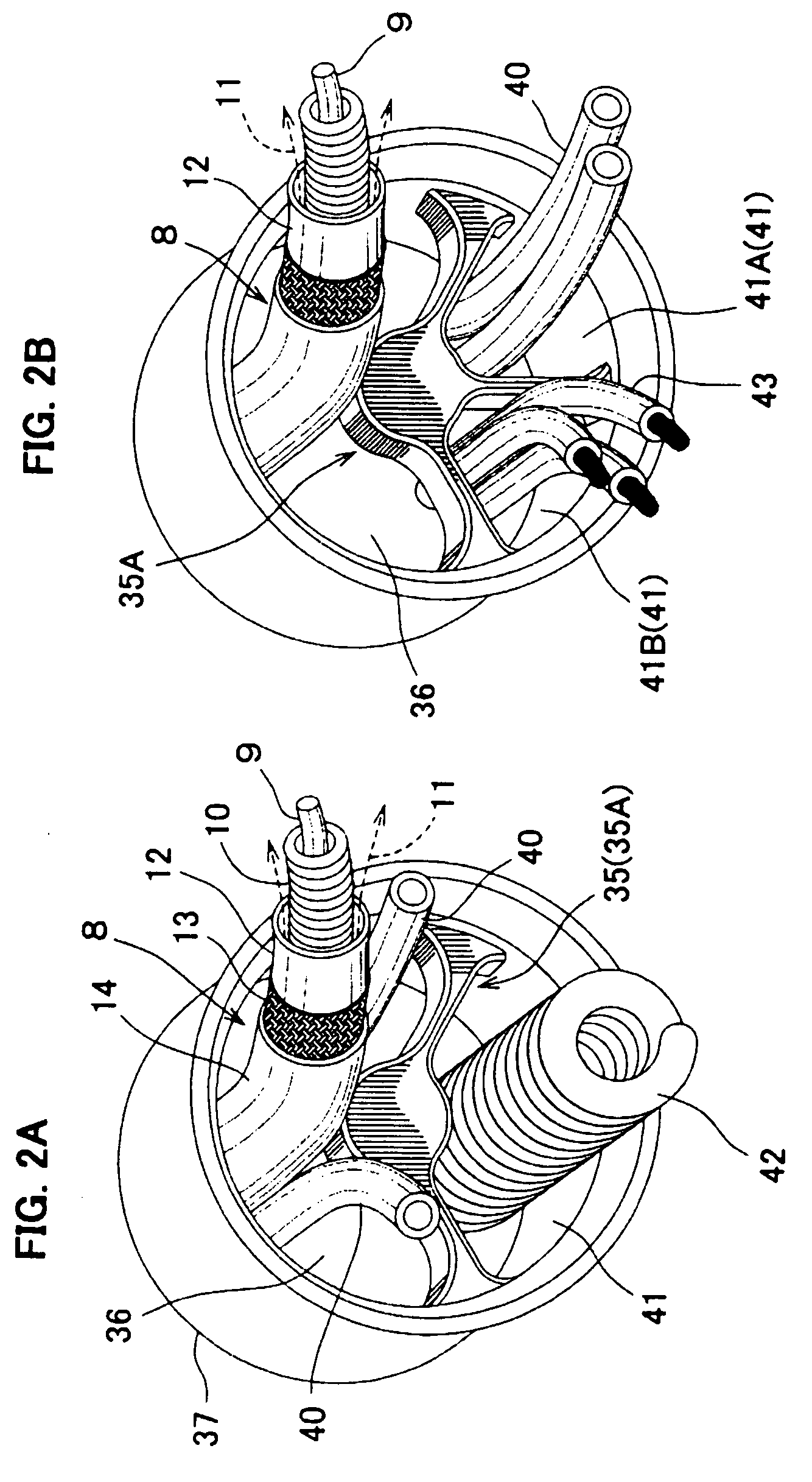Cable arrangement for robot arm, and industrial robot utilizing the same
a robot arm and cable technology, applied in the direction of programmed manipulators, manufacturing tools, welding apparatus, etc., can solve the problems of limited operability or movable range of welding torch cables, difficult to handle, and wear of torch cable cables, so as to prolong the life of the robot, minimize the influence of bending operation, and excellent welding torch mobility
- Summary
- Abstract
- Description
- Claims
- Application Information
AI Technical Summary
Benefits of technology
Problems solved by technology
Method used
Image
Examples
Embodiment Construction
[0051]Hereinafter, a cable arrangement for a robot arm and an industrial robot employing such a cable arrangement will be described with reference to the accompanying drawings.
[0052]Reference is first made to FIGS. 4A–4B and 5A–5B showing a multi-joint arc-welding robot 1 to which the present invention is applied. FIG. 4A is a front view of the robot, FIG. 4B is a sectional view taken in lines II-II in FIG. 4A, FIG. 5A is a sectional view taken in lines III-III in FIG. 4A, and FIG. 5B is a plan view of the robot. Aside from FIG. 5A, all of the figures show an upper arm 2 (to which the present invention is applied), illustrating its shape and the way it is attached. FIGS. 3A, 3B are a plan view and a front view illustrating how cables are arranged in the upper arm 2.
[0053]The arc-welding robot 1 includes six joints for implementing the movements indicated by the arrows in FIG. 4A. Each joint provides for implementing a rotating or twisting movement required for the arm to rotate, piv...
PUM
| Property | Measurement | Unit |
|---|---|---|
| electric energy | aaaaa | aaaaa |
| pressure | aaaaa | aaaaa |
| movement | aaaaa | aaaaa |
Abstract
Description
Claims
Application Information
 Login to View More
Login to View More - R&D
- Intellectual Property
- Life Sciences
- Materials
- Tech Scout
- Unparalleled Data Quality
- Higher Quality Content
- 60% Fewer Hallucinations
Browse by: Latest US Patents, China's latest patents, Technical Efficacy Thesaurus, Application Domain, Technology Topic, Popular Technical Reports.
© 2025 PatSnap. All rights reserved.Legal|Privacy policy|Modern Slavery Act Transparency Statement|Sitemap|About US| Contact US: help@patsnap.com



